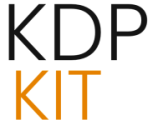
I. The Strategic Rationale: Tearing Down the Language Walls
The foundation of the Kindle Translate initiative isn’t altruism; it’s brilliant, data-driven market strategy. Amazon has long seen the massive friction point in the e-book sector: reader choice is hampered when content supply doesn’t match global demand. Their primary objective is clear: flood the global storefronts with more accessible content, which naturally drives more reader engagement and, crucially, more sales across Amazon’s international domains.
I.A. Quantifying the Untapped Global Audience Potential
Let’s look at the numbers, because they tell the real story here. It’s been widely reported that the current catalog on Amazon.com—and by extension, the global network—suffers from a glaring lack of multilingual content. The figure being circulated across publishing analyses suggests that fewer than five percent of available titles currently exist in more than one language. Think about that for a minute. Ninety-five percent of the content available to you, the dedicated reader, is trapped behind a language wall. For the independent creator, manual translation has always been the Achilles’ heel—it’s financially prohibitive for the vast majority of self-published authors. This isn’t just an opportunity gap; it’s a chasm Amazon is now bridging with AI.
I.B. Democratizing International Distribution for Independent Creators
If you’re a self-published writer who’s finally figured out how to market your work in English, the thought of going international usually triggers immediate fatigue. You’d need to hire agents, vet translation agencies that charge thousands of dollars for a single manuscript, and manage messy international publishing agreements. It’s a gatekeeper nightmare. Kindle Translate effectively bypasses all of that. It offers a direct, integrated pathway built right into the existing Kindle Direct Publishing dashboard. Your creative work is no longer strictly limited by the geography of your primary language. This is the kind of structural change that launches careers.
II. The Technical Implementation: How Kindle Translate Actually Works
The real wizardry of this launch isn’t just the AI model itself—it’s how Amazon managed to weave it so tightly into the KDP workflow. By using their proprietary infrastructure, they’ve moved the process out of complex, third-party software and into the familiar admin area authors use every single day. That ease of use is the key to mass adoption.
II.A. The Initial Language Pair Rollout and Beta Access. Find out more about Kindle Translate AI service for independent authors.
Amazon, wisely, didn’t drop this on everyone at once. They initiated a controlled beta phase to stress-test the system with real-world novels before a full public release. The initial language matrix is strategically narrow but powerful. We’re talking about direct, bidirectional translation capabilities between English and Spanish. Critically, they’ve also included a German-to-English conversion pathway. This focus likely targets their largest active international e-book markets first.
II.B. The Author-Driven KDP Portal Workflow
Once you opt-in, everything is managed within your KDP account. This is where author empowerment comes in. You select the target language, but you aren’t simply giving the work away for free in that market. You must establish a separate, localized list price. This puts the crucial business decision back in your hands—you decide what the Spanish or German market can bear economically. It’s translation as a self-publishing utility, not a mandatory service.
II.C. Processing Time and Format Preservation
Here is where the speed separates itself from the pack. Traditional, professional localization projects can eat up months, even a year, for a full-length novel. Amazon’s announcement claims the system is engineered to deliver fully formatted, ready-to-publish translations within a matter of just a few days. That speed is game-changing for capturing trending genres or capitalizing on early momentum. The system is clearly designed for rapid deployment and scale, not the slow, careful deliberation of high-end literary acquisition.
III. Quality Assurance and Authorial Control Mechanisms: Handling the ‘AI Glitch’
The biggest collective shudder across writer forums relates to the quality. AI translation, particularly for creative prose—where voice, tone, and idioms are everything—can go spectacularly wrong. Amazon seems to have anticipated this major pitfall by building mandatory checkpoints into the system, ostensibly to protect both reader satisfaction and the author’s brand integrity.
III.A. Automated Accuracy Evaluation Protocols. Find out more about Kindle Translate AI service for independent authors guide.
Before any translated manuscript leaves the system for the marketplace, it reportedly undergoes an automatic evaluation designed to check for internal consistency and flag major errors. Now, the specifics of this proprietary validation process remain utterly undisclosed—which is often the case with Amazon’s secret sauce. But the *existence* of this step provides a necessary layer of reassurance that the system isn’t just a word-for-word replacement without any contextual assessment whatsoever.
III.B. The Essential Author Preview Functionality
This is the most vital safeguard for any author who cares about their craft. The system does not force publication upon completion. Authors are given the ability to review the entire AI-generated translation before giving the final, green-light approval to push the title live. This is your chance to manually catch stylistic inconsistencies or cultural howlers the algorithm completely missed. Actionable Takeaway: If you don’t speak Spanish or German, you must budget for a professional proofreader to check the AI output before you hit ‘Publish’ on that localized edition. Trusting the preview function blindly is a recipe for poor international reviews.
III.C. Transparent Reader Labeling and Identification
Amazon is practicing a degree of transparency that many other platforms might avoid. Every e-book distributed through this AI mechanism will carry a clear designation, likely a tag like “Kindle Translate”. This manages reader expectations upfront. Readers are informed that the work was localized using integrated artificial intelligence. It’s a necessary step to maintain trust, acknowledging that an AI translation might possess a slightly different flavor than one done by a human literary scholar.
IV. The Economic Model: A Cost-Free Gateway to Global Royalties
Perhaps the most aggressively adopted feature of Kindle Translate is the economic structure attached to it. Amazon is underwriting the initial barrier to entry to incentivize massive, rapid adoption among the independent author community.
IV.A. Provision of Free Translation Services. Find out more about Kindle Translate AI service for independent authors tips.
The service is being offered at no initial cost to participating authors during this beta phase. This is a radical, zero-cost model for global outreach. To put this into perspective, professional human translation for a standard 300-page novel often runs between $6,000 and $10,000 based on per-word rates of $0.10 to $0.25. That upfront expense has killed more global dreams than writers’ block. This service demolishes that primary financial hurdle immediately.
IV.B. Pricing Autonomy for Translated Editions
Even though the translation itself is free (for now), authors keep full control over commercialization. You are permitted to set independent list prices for each foreign language edition. This is crucial for strategy. You can price aggressively low in a market like Mexico where book prices are different from Germany, tailoring your approach to local economic realities and competitive landscapes.
IV.C. Continued Eligibility for KDP Incentives
This is a massive piece of business logic. The AI-translated e-books are confirmed to remain eligible for inclusion in Amazon’s prime promotional programs, namely KDP Select. What does this mean in practical terms? It means those new Spanish and German editions can be enrolled in Kindle Unlimited (KU), opening up immediate revenue streams through page-read royalties on foreign sales that were previously unattainable without massive investment.
V. Industry Context and Competitive Positioning in 2025
Amazon’s timing is impeccable. They are launching this into a market already buzzing with sophisticated AI translation tools. Their advantage, however, isn’t just in the quality of the AI; it’s in the distribution network that wraps around it.
V.A. Comparison with Third-Party AI Platforms. Find out more about Kindle Translate AI service for independent authors strategies.
We know competitors exist. Platforms like DeepL are renowned for their neural machine translation accuracy, often praised for being more nuanced than general tools like Google Translate. However, their focus has historically been on shorter-form content, enterprise API integration, or general web translation use cases. Kindle Translate is specifically engineered for the complexities of *book-length* narratives—maintaining character consistency and thematic tone across hundreds of thousands of words, and crucially, integrating directly into the sales platform. Some competitors, like GlobeScribe.ai, charge a flat fee per book per language, making Amazon’s free beta offering a significant differentiator.
V.B. Synergy with Related Amazon AI Initiatives
This service doesn’t feel like a one-off. It signals a wider, calculated push by Amazon to saturate its global marketplaces with multilingual content. It follows closely on the heels of related advancements, such as the multilingual AI narration tools that have already been making waves on the Audible platform. This is Amazon leveraging its massive investment in AI research across its *entire* digital media portfolio, creating a compelling ecosystem for creators.
VI. Author Reception and Testimonials on Market Impact (November 2025 Snapshot)
The immediate feedback from the authors who were part of the closed beta paints a vivid picture of the perceived value. Their comments are powerful endorsements, focusing squarely on revenue enhancement and audience expansion, validating Amazon’s strategic move.
VI.A. Overcoming Historical Translation Obstacles
Independent creator Roxanne St. Claire, cited in the launch announcements, perfectly articulated the historical plight. She stated that for many years, authors lacked a “cost-effective and trustworthy solution” for foreign language translation. That single quote summarizes decades of frustration for the indie community. The new service is framed, quite successfully, as the solution to this long-standing impediment to global reach.
VI.B. Projected Revenue and Reach Expansion. Find out more about Kindle Translate AI service for independent authors overview.
The financial implications are the real driver. Fellow KDP author Kristen Painter highlighted that foreign translations offer a genuine “second life” for titles, opening doors to entirely new international readership bases. For an author, that translates directly into expanding both their reach and their overall, annualized revenue streams—the holy grail of self-publishing.
VII. Navigating Previous AI Disclosure Policies
One area that requires immediate author clarity is how this *localization* utility squares up against Amazon’s previously established terms regarding user-generated content involving artificial intelligence. The distinction between content *creation* and content *localization* is the fine line being drawn here.
VII.A. Defining AI-Assisted Versus AI-Generated Content
Last year, the guidelines were strict: mandatory disclosure for content that was fully *generated* by AI, even if you edited it later. The key difference now? This tool is positioned as a pure localization utility. The author is still the original creator of the text; Kindle Translate is simply the high-speed mechanism performing the translation. This positioning moves the resulting work closer to an “AI-assisted” category, or perhaps more accurately, “AI-localized,” pending official, post-beta clarification.
VII.B. The Role of Translation in the AI Content Spectrum
Amazon’s previous definitions tended to lump any AI-translated work under the general umbrella of AI-generated material. The introduction of a dedicated, integrated tool like this strongly suggests a formal, practical reclassification is underway. When the source author is fully in command of the original text, the translation is viewed as a derivative work that *enables* distribution, rather than *creating* the narrative substance.
VIII. Broader Implications for the Future of Digital Publishing and Content Localization. Find out more about Cost-free global distribution for self-published writers definition guide.
The long-term effects of Kindle Translate will stretch far beyond just the KDP author base. This technology signals a fundamental, irreversible shift in how the entire publishing industry approaches linguistic diversity, and it puts immediate pressure on traditional publishing houses to rethink their own slow-moving localization strategies.
VIII.A. The Acceleration of Content Localization Velocity
If an independent author can effectively scale their entire catalog internationally in weeks—not years—the market *will* become saturated with diverse, multi-language options much faster than anyone previously imagined. This new velocity will rapidly set a new, higher expectation for content availability across every major digital distribution platform, not just Amazon’s Kindle ecosystem.
VIII.B. Impact on Professional Translation Services
Let’s be blunt: this is a disruption. While high-end literary translation—the kind that captures the soul of Faulkner or the intricate rhythm of poetry—will likely retain its premium value for critically acclaimed or prize-winning works, the vast mid-list and genre fiction markets are now squarely in AI’s crosshairs. We may see a significant, sharp reduction in demand for human translators for initial market entry due to the speed and zero-upfront-cost nature of Amazon’s integrated solution.
VIII.C. The Expanding Content Library and Consumer Experience
Ultimately, the success of Kindle Translate boils down to a much richer experience for the reader. Globally, consumers will gain access to an exponentially wider array of niche genres, experimental voices, and indie narratives that never would have crossed a language border before. This reinforces Amazon’s gravitational pull as the single, most comprehensive source for e-books worldwide. This development marks a significant inflection point in the commodification of global readership.
Conclusion: Your Action Plan for November 2025
The launch of Kindle Translate is more than just a feature update; it’s a tectonic shift in the global self-publishing economy. As of today, November 7, 2025, the barrier to entry for international readership is essentially zero for KDP authors in the initial supported languages. Here are your immediate, actionable takeaways:
- Assess Your Backlist: Immediately review your entire catalog. Which of your titles are most genre-specific? Genre fiction travels well. The first title in a series is often the best candidate for an AI-localized launch to draw readers into the rest of the series.
- Price Strategically: Remember you have pricing autonomy. Do not apply your US list price to the German or Spanish editions without research. Check the average price for a comparable book in that specific Kindle marketplace.
- Budget for The Human Polish: Unless you are fluent in Spanish or German, do not blindly hit ‘Publish’ after the AI runs. The author preview is a starting point, not the finish line. Hire a native-speaking proofreader to review the AI output to protect your brand integrity against errors that could tank your international launch.
- Check KDP Select Status: Confirm your new foreign editions are eligible for KDP Select enrollment. This is your fastest route to potential new KU royalties.
The age of the multilingual indie author is here. Are you going to use this new power to stay monolingual, or are you ready to meet your new global audience?
What language are you translating into first? Drop your thoughts and any early testing insights in the comments below—let’s map out this new frontier together!









